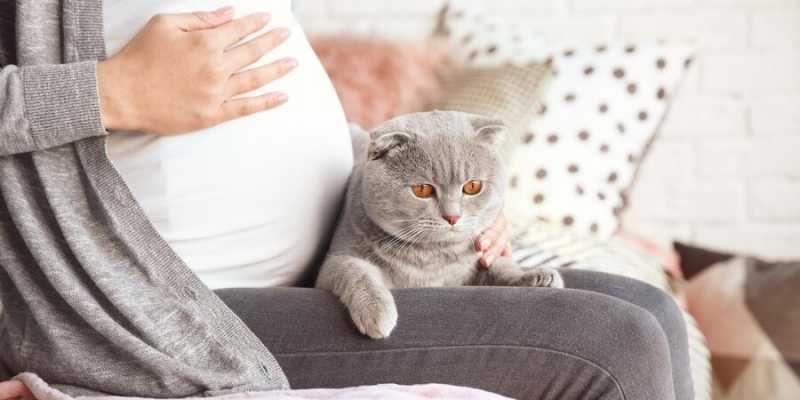Cats are among the most beloved pets in the world. They’re cute, affectionate, and often become loyal companions at home. However, behind their soft fur, questions often arise about potential health risks—especially for women. One persistent myth is that cat fur can affect a woman’s fertility or make it difficult to conceive. But is there […]
Cats are among the most beloved pets in the world. They’re cute, affectionate, and often become loyal companions at home. However, behind their soft fur, questions often arise about potential health risks—especially for women. One persistent myth is that cat fur can affect a woman’s fertility or make it difficult to conceive. But is there any truth to this? Let’s explore the facts.
Cat Fur and Fertility: The Link with Toxoplasmosis
One of the main concerns regarding cats and women’s health is toxoplasmosis, an infection caused by the Toxoplasma gondii parasite. This parasite is commonly found in cat feces and can spread through contact with contaminated soil, food, or water. Pregnant women who become infected with toxoplasmosis face the risk of passing the infection to their unborn child, which can result in serious complications such as miscarriage, birth defects, or developmental disorders.
But can cat fur itself make it hard to get pregnant? The short answer is: not directly. Cat fur is not the cause of infertility. The real concern lies in hygiene and potential contact with contaminated feces that may carry Toxoplasma gondii. This risk increases for women who frequently handle dirty litter boxes or have poor sanitation when dealing with cat waste.
A study cited by The New York Times clarifies that pregnant women don’t need to avoid cats entirely. Instead, proper hygiene—like washing hands after contact and avoiding direct handling of cat feces—is strongly recommended.

Image source: Freepik
Cat Fur and Women’s Health: Fact or Fiction?
Is cat fur truly dangerous for women? In reality, cat fur itself is generally harmless—unless someone is allergic. Allergies to cat fur are typically reactions to proteins found in cat saliva and dander, which stick to their fur. These allergies may trigger symptoms like sneezing, watery eyes, shortness of breath, or even asthma, but they are not linked to female fertility or reproductive health.
The greater concern is how clean the cat’s living environment is. Good hygiene is key to preventing any potential infections transmitted by parasites or bacteria. Keeping your cat’s environment clean and minimizing direct contact with their waste can significantly reduce health risks.

Image source: Freepik
Can Cat Fur Cause Infertility?
A common myth claims that cat fur can cause infertility in women. Scientifically, there is no evidence supporting the idea that cat fur directly affects female fertility. However, toxoplasmosis is a real concern, particularly for those planning pregnancy or who are already pregnant.
An article from Cofertility explains that toxoplasmosis can only be transmitted through direct contact with infected cat feces. This means cat owners only need to follow simple precautions, such as washing hands thoroughly and avoiding litter box duties during pregnancy.
Read more: 8 Signs of an Unhealthy Uterus Every Woman Should Know
Safety Tips for Cat Owners Planning Pregnancy
For women who own cats and are planning to conceive, hygiene and prevention are key. Here are some essential tips to reduce the risk of toxoplasmosis:
1. Wear gloves when cleaning the litter box or gardening
Toxoplasma gondii is often found in cat feces. Wearing gloves while cleaning litter boxes or working in the garden can help prevent direct contact with contaminated soil or waste. Always wash your hands afterward—even if you wore gloves.
2. Wash your hands after handling cats, especially before meals
Hand hygiene is critical in preventing transmission. Even though not all cats carry toxoplasma, washing your hands with soap after handling cats—especially before eating—is an effective safety measure.
3. Keep your cat indoors
Outdoor cats are more likely to catch the parasite by hunting infected prey, such as birds or rodents. Keeping cats indoors not only protects them but also lowers your exposure risk.
4. Clean the litter box daily
Toxoplasma gondii becomes infectious 1 to 5 days after being excreted in feces. Daily cleaning can prevent the parasite from reaching the infectious stage. Use hot water and appropriate cleaning agents to eliminate potential pathogens.
5. Eat only well-cooked meat
Toxoplasma is not exclusive to cats. It can also be found in undercooked meats—especially lamb, pork, and venison. Always cook meat to safe internal temperatures. Avoid raw milk and wash fruits and vegetables before consumption.
By taking these simple steps, you can enjoy life with your beloved cat without undue concern—even while trying to conceive.
Read more: Recognizing the Signs and Symptoms of Infertility in Women
Conclusion: Is Cat Fur a Real Threat to Women’s Health?
In summary, cat fur is not dangerous as long as you maintain proper hygiene and take reasonable precautions—especially during pregnancy. Toxoplasmosis is the main concern, and it can be prevented with good sanitation habits. Cat fur is not a direct cause of fertility issues.
If you own a cat, there’s no need to panic. With proper care and hygiene, you can continue to enjoy the companionship of your furry friend without excessive worry about health risks.
For those who are undergoing fertility treatment or dealing with infertility issues, you can consult professional OB-GYNs at Morula IVF Indonesia. This fertility clinic offers comprehensive consultations and care, backed by over 26 years of experience. Their dedicated team is here to help couples achieve a healthy pregnancy. For more information, visit the official Morula IVF website or contact our team directly.
References:
- Jordan Times. “Cats and Women’s Health.” Accessed October 2024.
- Greater Kashmir. “Are Cats Affecting Our Fertility?” Accessed October 2024.
- Cofertility. “Infertility Myths: What’s Real and What’s Fake News?” Accessed October 2024.
- The New York Times. “The Claim: Pregnant Women Should Avoid Cats.” Accessed October 2024.
- Food and Drug Administration (FDA). “Toxoplasma Prevention: Before You Become Pregnant.” Accessed October 2024.




